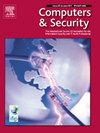Safeguarding connected autonomous vehicle communication: Protocols, intra- and inter-vehicular attacks and defenses
IF 4.8
2区 计算机科学
Q1 COMPUTER SCIENCE, INFORMATION SYSTEMS
引用次数: 0
Abstract
The advancements in autonomous driving technology, coupled with the growing interest from automotive manufacturers and tech companies, suggest a rising adoption of Connected Autonomous Vehicles (CAVs) in the near future. Despite some evidence of higher accident rates in AVs, these incidents tend to result in less severe injuries compared to traditional vehicles due to cooperative safety measures. However, the increased complexity of CAV systems exposes them to significant security vulnerabilities, potentially compromising their performance and communication integrity. This paper contributes by presenting a detailed analysis of existing security frameworks and protocols, focusing on intra- and inter-vehicle communications. We systematically evaluate the effectiveness of these frameworks in addressing known vulnerabilities and propose a set of best practices for enhancing CAV communication security. The paper also provides a comprehensive taxonomy of attack vectors in CAV ecosystems and suggests future research directions for designing more robust security mechanisms. Our key contributions include the development of a new classification system for CAV security threats, the proposal of practical security protocols, and the introduction of use cases that demonstrate how these protocols can be integrated into real-world CAV applications. These insights are crucial for advancing secure CAV adoption and ensuring the safe integration of autonomous vehicles into intelligent transportation systems.
保护连接的自动驾驶汽车通信:协议、车内和车间攻击和防御
自动驾驶技术的进步,加上汽车制造商和科技公司日益增长的兴趣,表明在不久的将来,联网自动驾驶汽车(cav)的采用将越来越多。尽管有证据表明自动驾驶汽车的事故率更高,但由于合作安全措施,与传统车辆相比,这些事故往往造成的严重伤害较小。然而,CAV系统复杂性的增加使其暴露于严重的安全漏洞中,可能会损害其性能和通信完整性。本文对现有的安全框架和协议进行了详细的分析,重点介绍了车辆内部和车辆间的通信。我们系统地评估了这些框架在解决已知漏洞方面的有效性,并提出了一套增强CAV通信安全的最佳实践。本文还提供了CAV生态系统中攻击向量的综合分类,并提出了设计更健壮的安全机制的未来研究方向。我们的主要贡献包括开发CAV安全威胁的新分类系统,提出实用的安全协议,以及介绍如何将这些协议集成到真实的CAV应用程序中的用例。这些见解对于推进自动驾驶汽车的安全采用和确保自动驾驶汽车与智能交通系统的安全集成至关重要。
本文章由计算机程序翻译,如有差异,请以英文原文为准。
求助全文
约1分钟内获得全文
求助全文
来源期刊

Computers & Security
工程技术-计算机:信息系统
CiteScore
12.40
自引率
7.10%
发文量
365
审稿时长
10.7 months
期刊介绍:
Computers & Security is the most respected technical journal in the IT security field. With its high-profile editorial board and informative regular features and columns, the journal is essential reading for IT security professionals around the world.
Computers & Security provides you with a unique blend of leading edge research and sound practical management advice. It is aimed at the professional involved with computer security, audit, control and data integrity in all sectors - industry, commerce and academia. Recognized worldwide as THE primary source of reference for applied research and technical expertise it is your first step to fully secure systems.
 求助内容:
求助内容: 应助结果提醒方式:
应助结果提醒方式:


